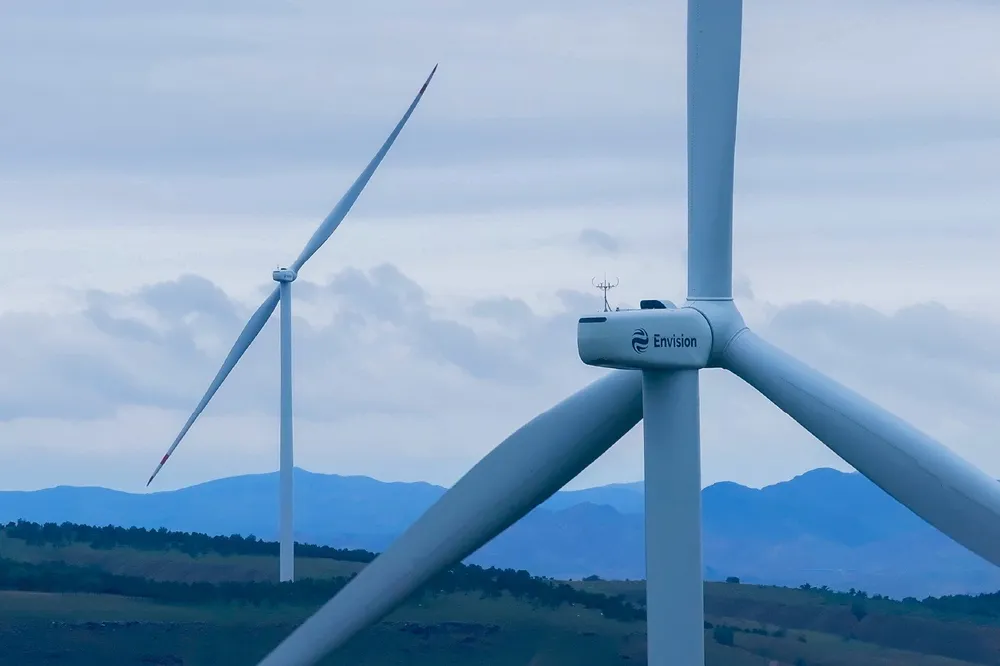Wind turbine giant reveals secret operational two-blade prototype
Chinese wind power giant Envision has confirmed existence of secret prototype after 500 days successful operation

Wind turbine giant Envision has secretly been testing an almost 6MW two-blade wind turbine prototype in China’s remote north, it has been revealed.
Envision has confirmed in an announcement that its “next-generation two-blade onshore smart turbine prototype” has achieved over 500 days of stable operation.
It has achieved this with a “remarkable” availability rate of 99.3%, a mean time between failures of 2,444 hours, and equivalent full-load hours reaching 3,048 hours per year, said Envision.
“Field performance confirms that the two-blade turbine is on par with traditional three-blade machines operating at the same site.”
The turbine is built on Envision’s Model X onshore platform, featuring a modular design and high-speed doubly-fed induction generator technology with enhanced stability.
Envision said it is designed for “high performance, lightweight construction, and system-level efficiency.”
The capacity of the two-blade turbine is almost six megawatts, said Lou.
Envision said that its journey with two-blade turbine technology began more than a decade ago at the Global Innovation Center in Denmark, where it tested the “Game Changer” – a 3.6MW offshore two-blade turbine.
Since the prototype was installed in 2013, Envision said it has accumulated significant product development and operational know-how, laying the foundation for its new two-blade model.
Envision said its new two-blade turbine “offers a fresh alternative to conventional three-blade models, particularly in scenarios where cost efficiency, transportability, and modular deployment are paramount.”
Two-bladed wind turbines have attracted varying degrees of interest over the years but have never taken off, with the industry having consolidated around three-blade designs.
Two-blade machines can be more cost effective as they use fewer materials. Having only two blades also reduces strain on the rotor.
Such turbines have been "designed and built since the beginning of modern wind energy but rarely found a market for some of the unique advantages over three-bladed turbines.”
Gilkes said this is because these advantages – such as lower costs and easier installation – have been offset by the disadvantages, including difficulty managing extreme operating loads, the additional noise they make and their “odd” appearance.
“But as supporting technologies evolve, a market could be made, and many wind turbine manufacturers have carried on looking for two-bladed opportunities,” said Gilkes.